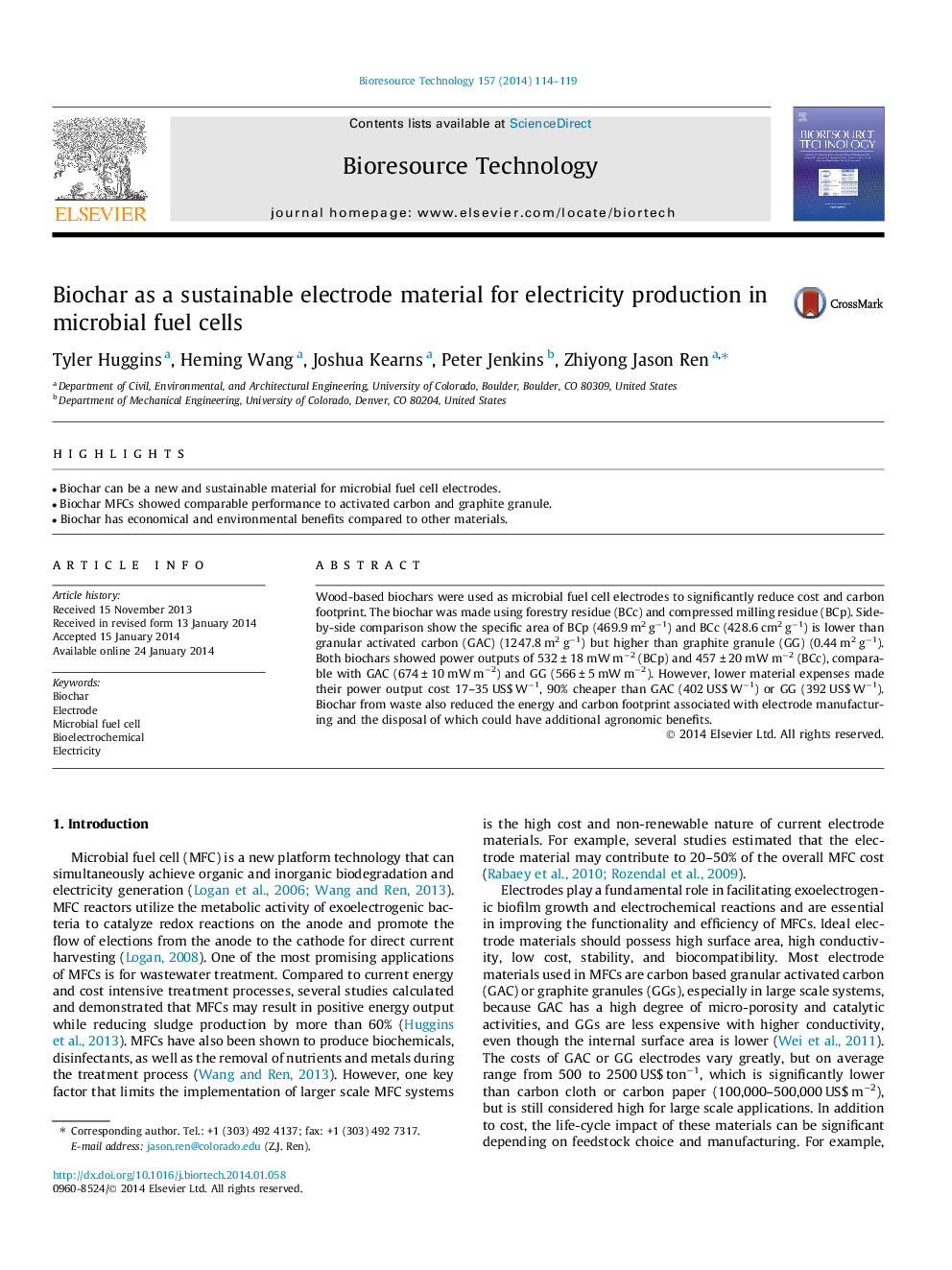| کد مقاله | کد نشریه | سال انتشار | مقاله انگلیسی | نسخه تمام متن |
|---|---|---|---|---|
| 680919 | 1459986 | 2014 | 6 صفحه PDF | دانلود رایگان |

• Biochar can be a new and sustainable material for microbial fuel cell electrodes.
• Biochar MFCs showed comparable performance to activated carbon and graphite granule.
• Biochar has economical and environmental benefits compared to other materials.
Wood-based biochars were used as microbial fuel cell electrodes to significantly reduce cost and carbon footprint. The biochar was made using forestry residue (BCc) and compressed milling residue (BCp). Side-by-side comparison show the specific area of BCp (469.9 m2 g−1) and BCc (428.6 cm2 g−1) is lower than granular activated carbon (GAC) (1247.8 m2 g−1) but higher than graphite granule (GG) (0.44 m2 g−1). Both biochars showed power outputs of 532 ± 18 mW m−2 (BCp) and 457 ± 20 mW m−2 (BCc), comparable with GAC (674 ± 10 mW m−2) and GG (566 ± 5 mW m−2). However, lower material expenses made their power output cost 17–35 US$ W−1, 90% cheaper than GAC (402 US$ W−1) or GG (392 US$ W−1). Biochar from waste also reduced the energy and carbon footprint associated with electrode manufacturing and the disposal of which could have additional agronomic benefits.
Journal: Bioresource Technology - Volume 157, April 2014, Pages 114–119